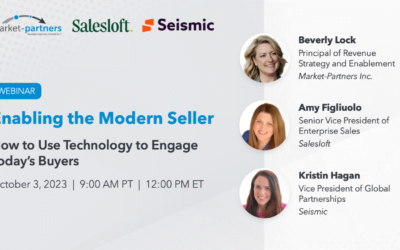As sales and marketing professionals, technology can give us unprecedented visibility into what our buyers are really doing: when they are visiting, what they are clicking on, what they are reading, and hopefully which parts of our messaging is resonating. Although this can seem like a dream come true, actually looking at this data can be wake-up call. Your stomach might even begin to churn when you see how little of the great collateral you labor over is being used and consumed.
There’s nothing quite like the first time you run usage analytics only to see that your hot prospect spent all of 30 seconds reviewing the six-page whitepaper you spent weeks perfecting. Maybe even more shocking is seeing that your sales department is using less than 12% of all the collateral available to them. The natural urge here might be to redesign or rewrite collateral – this time with better pictures or a catchier headline. On the other hand, it is also reasonable to believe this an awareness issue and that we need to inform the sales force about all the content they have at their fingertips.
There may be some value in these activities depending on your circumstances, but it is probably best to accept this wake-up call for what it is. Put yourself in your prospects and customers real world for a moment. Think about the last document that was sent to you by a salesperson or the most recent brochure you downloaded. How long did you really spend reading it?
Buying Has Changed. Our Marketing Should, Too.
In today’s world, we are super-saturated with sales pitches, marketing messages, and content. Surveys have shown that the average person in North America now receives over 2,000 marketing impressions a day. The overabundance of this messaging has forced us, as buyers, to ignore most of it just to function, and worse, to evaluate offers quickly when something does pique our interest. How long do we read about something that could actually be of benefit to us? Habitually, we simply scan the pamphlet and give little more than 10 seconds to a page. For an email to prompt us to read every word and study the offering in detail demands an almost supernatural level of relevancy to whatever is the top-of-mind, current priority. That is how we work in the modern buying environment.
So, does this mean we should no longer publish great white papers and collateral, or not fret over the small details of our advertisements? No. I firmly believe it is crucial that we continue to create and offer good content. However, we need to consider two things.
Does this help how we are perceived? First, like in Peter Sellers’ classic film, “Being There,” good fortune comes to those who are in the right place, at the right time, and give the right first impression. Whether your goal is for buyers to see you as a thought leader, low-price competitor, alternative provider, or anything else, it is possible to achieve that positioning in less than a minute. Even if a prospect does not read every word of your piece, as long as they leave thinking and feeling what you wanted them to, you have already won.
Is this adding value to my customer’s buying process? Second, we must reflect upon what “good” content is in the modern era. Above, I alluded to the aspirational goal of proving insightful and relevant information to a specific individual. That is what it takes to get more than scanned. There is both an art and a science to developing engaging, relevant, and insightful content – most of which we would argue comes back to a deep understanding of your customers’ buying journey. That said, you can still embrace the reality of your buyer right now and review your marketing material. If you are faced with a document that simply gives you information that could have easily been found on the website, or information that is of no interest, I am willing to bet it won’t get much attention. This can be a quick way to avoid using duds and instead pick something more impactful.
Technology enables us to fully understand how our content is being used and consumed. This not only creates the opportunity for us to learn more about our customers, but also to develop better content that brings them greater value. Although disheartening when you see that a piece of collateral you labored over was only viewed for 30 seconds, don’t despair. That 30 seconds may have been all you needed for the prospect to return your phone call, tell a teammate about your offering, or see you as their first choice when their buying journey begins. So, be thankful that you gained 18 seconds more than most, learn what you can, and continue to optimize your content for the next time around.




